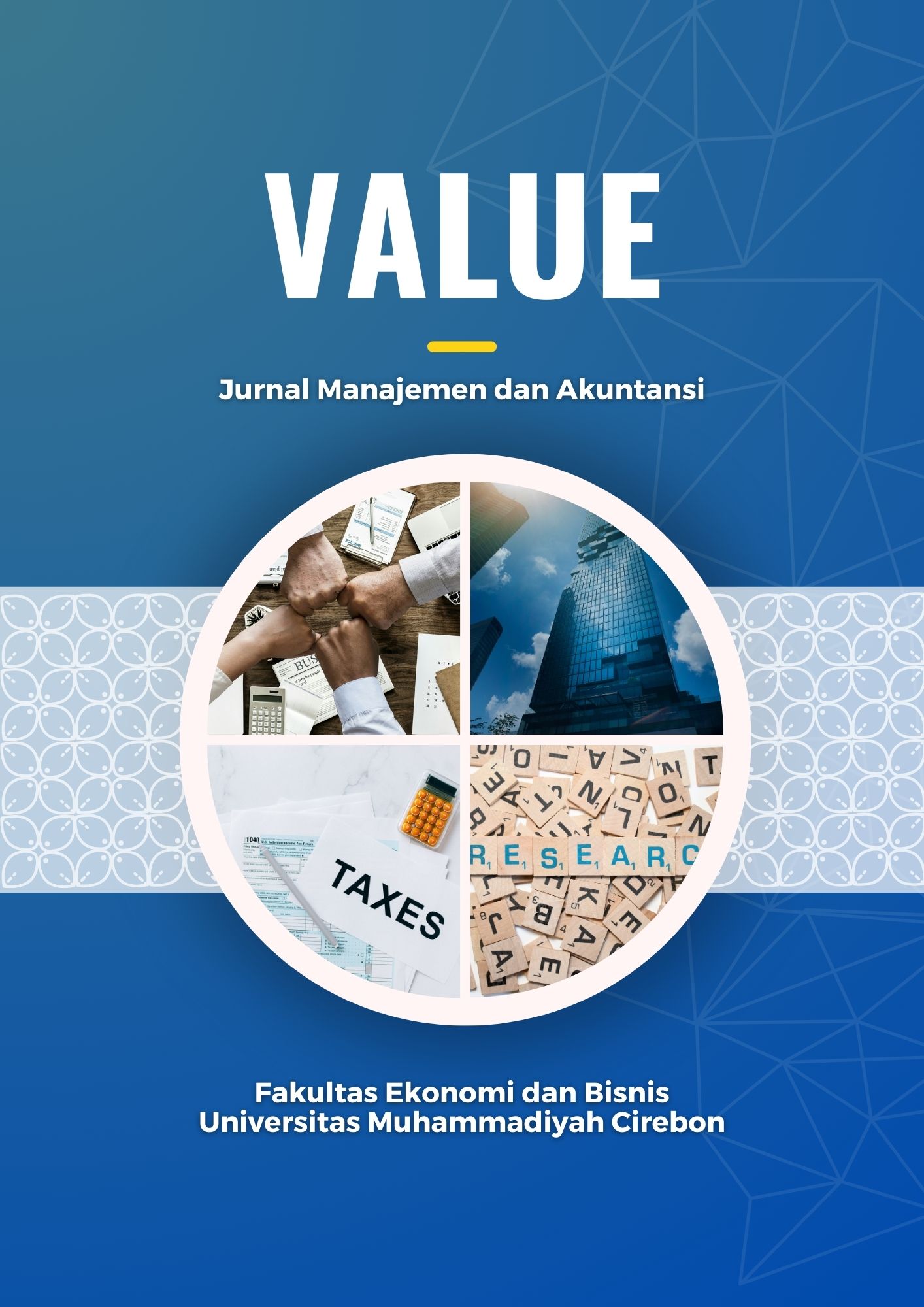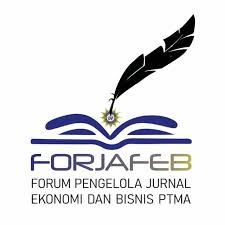Quiet Quitting through Psychological Well-Being: Mindfulness Compensation and Work-Life Boundary in Retail
DOI:
https://doi.org/10.32534/jv.v20i2.7189Keywords:
Mindfulness-Based Compensation, Work-Life Boundary, Psychological Well-Being, Quiet QuittingAbstract
This study explores the role of mindfulness-based compensation and work-life boundary management in reducing quiet quitting through psychological well-being among retail employees in Padang, Indonesia. A total of 109 respondents from small and large retail businesses participated using a stratified random sampling technique. Data were gathered through a structured questionnaire and analyzed with Partial Least Squares Structural Equation Modeling (PLS-SEM). Findings reveal that both mindfulness-based compensation and work-life boundary significantly affect psychological well-being and reduce quiet quitting. However, psychological well-being does not significantly influence quiet quitting and does not mediate the relationship between the two independent variables and quiet quitting. These results suggest that while organizational efforts may improve psychological well-being, they do not necessarily reduce employee disengagement. Retail companies should incorporate mindfulness elements into compensation policies and establish clear work-life boundaries to support employee engagement. Additionally, the findings point to the need for further research on other influential factors, such as job satisfaction and organizational culture, which may directly impact quiet quitting. Future studies are encouraged to examine alternative mediators to better understand disengagement and to develop more effective human resource strategies for the retail sector.
References
Adriyanto, A. (2024). Evaluation of Employee Engagement Level in Improving Productivity and Retention in the Company. Atestasi: Jurnal Ilmiah Akuntansi, 6(1), 583–598. https://doi.org/10.57178/atestasi.v6i1.1105
Aggarwal, A. (2020). Leader–member exchange, work engagement, and psychological withdrawal behavior: the mediating role of psychological empowerment. Frontiers in Psychology, 1(1). https://doi.org/10.3389/fpsyg.2020.00423
Alessio, F. (2023). The relationship between mindfulness, work-related stress management, and job satisfaction in a sample of Italian correctional officers. Journal of Health and Social Sciences, 8(4), 357–367. https://journalhss.com/wp-content/uploads/JHSS_THRL8.pdf
Althammer, E. S. (2021). A mindfulness intervention promoting work–life balance: How segmentation preference affects changes in detachment, well?being, and work–life balance. Journal of Occupational and Organizational Psychology, 11(13), 282–308. http://dx.doi.org/10.1111/joop.12346
Anasi, S. N. (2023). Perceived influence of work relationship, work load and physical work environment on job satisfaction of librarians in South-West. Global Knowledge, Memory and Communication, 1(1), 377–398. https://doi.org/10.1108/GKMC-11-2019-0135
Azeem, M. U. (2020). Psychological contract violation and turnover intention: The role of job dissatisfaction and work disengagement. Employee Relations: The International Journal, 6(42), 1291–1308. https://doi.org/10.1108/ER-09-2019-0372
Black, M. (2024). The principles of Nurturing Care promote human capital and mitigate adversities from preconception through adolescence. BMJ Global Health, 2(12). https://gh.bmj.com/content/6/4/e004436
Cantarelli, Paola, Nicola Belle, & P. B. (2024). Behavioral public HR: Experimental evidence on cognitive biases and debiasing interventions. Review of Public Personnel Administration, 1(40), 56–81. https://doi.org/10.1177/0734371X18778090
Chan, H. C., & Chu, K. M. (2024). A Multilevel Perspective on High-Performance Work System, Mindfulness, Employee Work Well-Being, and Employee Creative Engagement. SAGE Open, 14(2), 21582440241242206. https://doi.org/10.1177/21582440241242206
Christin, M. &. (2022). Mindfulness practice improves managers’ job demands-resources, psychological detachment, work-nonwork boundary control, and work-life balance–A randomized controlled trial. International Journal of Workplace Health Management, 4(15), 493–514. http://dx.doi.org/10.1108/IJWHM-07-2021-0146
?ingien?, J?rat?, & A. B. (2025). Work-Nonwork boundaries in academia: A problematizing review. Open Research Europe, 3(11). https://doi.org/10.12688/openreseurope.18573.2
Csilla, D. V. (2024). Understanding and Overcoming Burnout: Insights into EFL Teacher Engagement and Reengagement in Hungarian Secondary Schools. Diss. University of Nottingham, 1(1). https://eprints.nottingham.ac.uk/id/eprint/79889
David, B. (2023). Theorizing the relationship between discretionary employee benefits and individual performance. Human Resource Management Review, 1(23). https://doi.org/10.1016/j.hrmr.2022.100901
Elufioye. (2024). Reviewing employee well-being and mental health initiatives in contemporary HR Practices. International Journal of Science and Research Archive, 1(11). http://dx.doi.org/10.30574/ijsra.2024.11.1.0153
Fan, Y. (2021). A process?oriented, multilevel, multidimensional conceptual framework of work–life balance support: A multidisciplinary systematic literature review and future research agenda. International Journal of Management Reviews, 4(23), 486–515. https://doi.org/10.1111/ijmr.12254
Fini, R. (2023). A new take on the categorical imperative: Gatekeeping, boundary maintenance, and evaluation penalties in science. Organization Science, 3(24), 1090–1110. https://doi.org/10.1287/orsc.2022.1610
Gribben & Semple. (2021). Factors contributing to burnout and work-life balance in adult oncology nursing: an integrative review. European Journal of Oncology Nursing, 1(2). https://doi.org/10.1016/j.ejon.2020.101887
Hair, J. F., Sarstedt, M., Hopkins, L., & Kuppelwieser, V. G. (2021). Partial least squares structural equation modeling (PLS-SEM): An emerging tool in business research. European Business Review, 26(2), 106–121. https://doi.org/10.1108/EBR-10-2013-0128
Hamouche & Papastathopoulos. (2023). Quiet quitting: relationship with other concepts and implications for tourism and hospitality. International Journal of Contemporary Hospitality Management, 12(35), 4297–4312. https://doi.org/10.1108/IJCHM-11-2022-1362
Jha, S., Maity, S., Singh, J., Chouhan, C., Tak, N. & Ambatipudi, K. (2022) Integrated physiological and comparative proteomics analysis of contrasting genotypes of pearl millet reveals underlying salt-responsive mechanisms. Physiologia Plantarum, 174(1), e13605. https://onlinelibrary.wiley.com/doi/epdf/10.1111/ppl.13605
Jr, J. F. H., William C. Black, Babin, B. J., & Rolph E. Anderson. (2019). Multivariate Data Analysis (Seventh). Pearson Prentice Hall.
Kalinien?, G. (2021). The burnout syndrome among women working in the retail network in associations with psychosocial work environment factors. International Journal of Environmental Research and Public Health 18, 1(1). https://doi.org/10.3390/ijerph18115603
Kamboj, J. (2025). Modelling the relationship between work-family boundaries, work-life balance, workload and employees’ turnover intentions: moderated mediation analysis. International Journal of Productivity and Performance Management, 1(1). https://doi.org/10.1108/IJPPM-07-2024-0475
Khemraj, S., P. (2023). Implementing Mindfulness In The Workplace: A New Strategy For Enhancing Both Individual And Organizational Effectiveness. Journal for ReAttach Therapy and Developmental Diversities, 1(6). http://dx.doi.org/10.1234/jrtdd.v6i2s.2155
Kwon & Kim. (2020). An integrative literature review of employee engagement and innovative behavior: Revisiting the JD-R model. Human Resource Management Review, 30(2). https://doi.org/10.1016/j.hrmr.2019.100704
Litmanen, S. (2021). The impact of leadership on employee’s well-being–job engagement, job satisfaction and meaning of work–an integrative literature review. Journal IBuss Management, 1(1). https://www.theseus.fi/handle/10024/511315
Macdonald, A. (2023). Preserving the integrity of adapted mindfulness-based programmes: an exploratory case study of adapting a mindfulness-based programme to a retail setting. Journal of Applied Psychology, 1(2). http://dx.doi.org/10.7488/era/3555
Mandira Gerrels. (2024). Leveraging Signaling to Prevent Cognitive Disengagement in Virtual Middle School Students: A Transcendental Phenomenological Study. Journal Psycho Holistic, 1(2). https://digitalcommons.liberty.edu/doctoral/5445
Nogueiro, M. S. and T. (2022). Perspectives and Realities of Disengagement Among Younger Generation Y and Z Workers in Contemporary Work Dynamics. Administrative Sciences, 4(15). https://doi.org/10.3390/admsci15040133
Nourafkan, J. (2024). Can mindfulness improve organizational citizenship and innovative behaviors through its impact on well-being among academics? Psychological Reports, 1(1). https://doi.org/10.1177/00332941211069517
Othman, H. (2024). Assessing reliability and validity of attitude construct using partial least squares structural equation modeling. Int J Acad Res Bus Soc Sci, 1(1). http://dx.doi.org/10.6007/IJARBSS/v12-i5/13289
Parayitam & Naina. (2023). Knowledge management and emotional exhaustion as moderators in the relationship between role conflict and organizational performance: Evidence from India. Journal of Knowledge Management, 6(25). https://doi.org/10.1108/JKM-03-2020-0184
Patel, P. (2020). A multidimensional quiet quitting scale: Development and test of a measure of quiet quitting. PloS One, 2(13). https://doi.org/10.1371/journal.pone.0317624
Pevec, N. (2023). The Concept of Identifying Factors of Quiet Quitting in Organizations: An Integrative Literature Review. Challenges of the Future/Izzivi Prihodnosti, 2(8). http://dx.doi.org/10.37886/ip.2023.006
Rocha, H. C. F. (2023). The impact of work-life conflict on employees’ emotional well-being and the adoption of quiet quitting—a study case applied to the Portuguese hospitality industry." International Conference on Tourism, Technology and Systems. Springer Nature Singapore, 2(11). https://link.springer.com/chapter/10.1007/978-981-99-9758-9_18
Sathiyaseelan, A. (2024). Promoting Mindfulness and Well-being with Indian Psychology. IGI Global, 3(3).
Sayed, A. M. (2021). Examining the boundaries of ethical leadership: The harmful effect of co-worker social undermining on disengagement and employee attitudes. Journal of Business Ethics, 1(1), 355–368. https://doi.org/10.1007/s10551-020-04586-2
?ennur, K. (2022). The mediating effect of work engagement on innovative work behavior and the role of psychological well-being in the job demands–resources (JD-R) model. Asia-Pacific Journal of Business Administration, 1(14), 124–144. https://doi.org/10.1108/APJBA-09-2020-0326
Shah, D. & M. P. (2023). Understanding Work-Life Balance: An Analysis of Quiet Quitting and Age Dynamics using Deep Learning. International Research Journal of Engineering Technology, 1(6). http://dx.doi.org/10.13140/RG.2.2.21097.47204
Sharafizad, J. (2020). Leadership/management factors impact on employee engagement and discretionary effort. International Journal of Organization Theory & Behavior, 1(23), 43–64. https://doi.org/10.1108/IJOTB-12-2018-0134
Stockkamp et al. (2023). Intrinsic motivation as a double?edged sword: Investigating effects on well?being and the role of flex place practices as moderator to buffer adverse effects. Applied Psychology: Health and Well?Being, 2(15), 611–628. https://doi.org/10.1111/aphw.12399
Stoddart, F. (2024). The Role of Flexible Work Arrangements in Mitigating Teacher Burnout Caused by Heavy Workloads in Urban Schools. Research and Advances in Education, 3(12), 27–35. https://www.paradigmpress.org/rae/article/view/1451
Toyama, H. K. U. (2022). Job crafting and well-being among school principals: The role of basic psychological need satisfaction and frustration. European Management Journal, 5(40), 809–818. https://doi.org/10.1016/j.emj.2021.10.003
Tsen & Khie Mung. (2024). Does flexible work arrangements decrease or increase turnover intention? A comparison between the social exchange theory and border theory. International Journal of Sociology and Social Policy, 2(16), 962–983. https://doi.org/10.1108/IJSSP-08-2021-0196
Valdehita, R. (2024). Burnout among retail workers in Spain: the role of gender, personality and psychosocial risk factors. Journal Social Sciences, 5(13), 264. https://doi.org/10.3390/socsci13050264
Vignoli, M. (2022). How workers’ emotional dissonance explains the association between customers’ relations, burnout and health in an Italian supermarket chain. La Medicina Del Lavoro, 3(112). https://doi.org/10.23749/mdl.v112i3.9907
Wang, W. (2023). An empirical study on the creative learning environment fostering student creativity: A multiple mediation analysis using smart PLS. Journal of Educational and Social Research, 13(4), 10. http://dx.doi.org/10.36941/jesr-2023-0085
Wiedermann, C. (2023). Fortifying the foundations: a comprehensive approach to enhancing mental health support in educational policies amidst crises. Healthcare, 10(11). https://doi.org/10.3390/healthcare11101423
Zainal, N. H. (2025). Prescriptive predictors of mindfulness ecological momentary intervention for social anxiety disorder: Machine learning analysis of randomized controlled trial data. MIR Mental Health, 1(1). https://doi.org/10.2196/67210
Zhao, L. (2022). Doing it purposely? Mediation of moral disengagement in the relationship between illegitimate tasks and counterproductive work behavior. Journal of Business Ethics, 1(1). https://doi.org/10.1007/s10551-021-04848-7
Zheng, X. (2023). Differential effects of proactive and reactive work connectivity behavior after-hours on well-being at work: A boundary theory perspective. Behavioral Sciences, 3(15). https://doi.org/10.3390/bs15030320


















